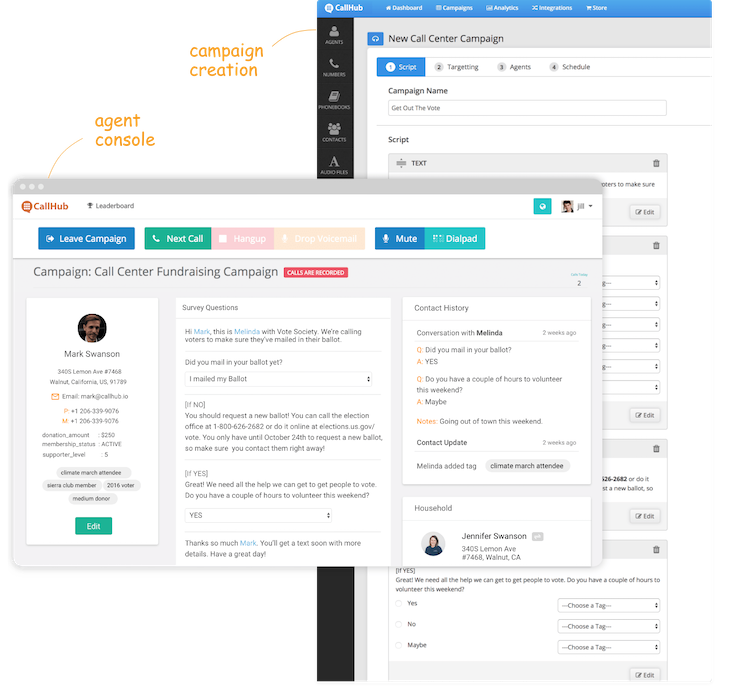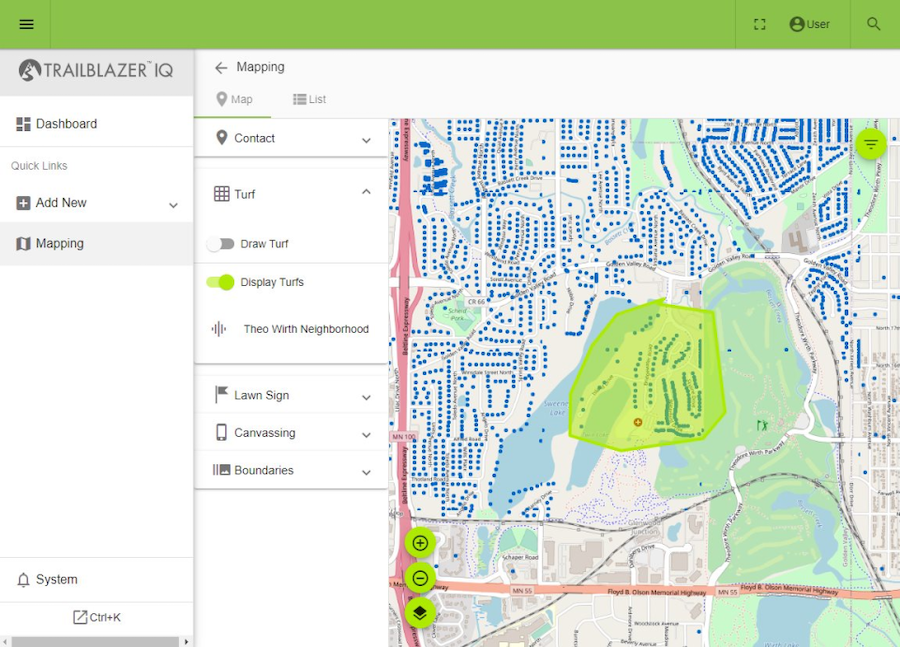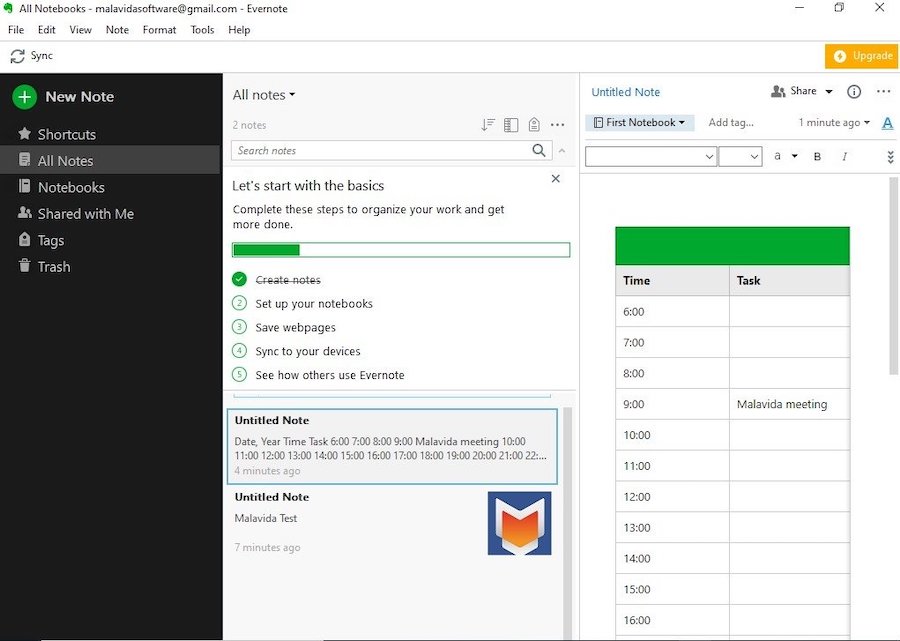Table of Contents
Why cold canvassing? Well, convincing people to buy what you’re providing is hard. Through cold calls, you can dial thousands of numbers and still get only a couple of positive responses.
Ever wondered why this happens?
One of the root causes of this is that the people you are calling (the decision makers) are just not interested in what you’re offering. Of course, they are not going to spend their time or money on something that they aren’t interested in.
If there was a way to filter out these uninterested people beforehand, your team could focus on those who are genuinely interested, thereby making your interactions more productive.
The good news is that there is a way.
Cold canvassing does the heavy lifting for you and makes your efforts more efficient. Let’s take a look at what it is and how you can carry it out.
What is cold canvassing?
Cold canvassing is the process of approaching people and gauging their interest in buying your service and product down the line. The interaction doesn’t involve any sales pitch or even details about what you are offering. The sole objective of the interaction is to survey the individual and collect insights that help point out the leads.
There two ways to carry out cold canvassing:
- In-person: You do this by going door to door in a neighborhood.
- Over a call: You can organize a phonathon to connect to a large list of people or go through lists individually if you have a smaller team.
Let’s understand this with a cold canvassing example. Assume that there is a company that sells soaps. A direct sales pitch would include talking about the USP of the product and why an individual should buy it.
But if the company was engaging in cold canvassing, the real time interaction would probably include questions like:
- Does the individual like soaps that lather more or not?
- Does the individual like their soap to act as a germ killer or a body moisturizer?
- Would the individual buy another brand of soap if it offers all that the current soap is offering but at a lower price?
And many more questions like these.
The first and second questions indicate what the prospect would prefer, thereby helping the company define whether the prospect would be interested in their soap or not.
The third question is an indication of the individual’s brand loyalty, and if the person says no, the company will know that this prospect cannot be a priority.
You can pass on this information to your sales team to follow up with those who are interested through the cold call and pitch them the product.
Important terms you should be aware of
When researching about cold canvassing, you’re likely to come across a few terms that could throw you off track. Let’s understand them, so your research is better informed.
What is a cold prospect?
A cold prospect is a potential customer who has little to no awareness about your company. They are interested in the product/service (that you are offering); they just don’t know that you exist and can provide it to them.
What is a warm prospect?
A warm prospect is a potential customer who is aware of your company and its offerings. They comprise of people who have positively responded to your marketing outreach efforts and past customers who can be converted to repeat customers.
What is cold calling?
Cold calling is the process of getting in touch with cold prospects over the phone in an attempt to convert them into paying customers. When you make a call to someone who has not been contacted by your sales team earlier, it is known as a cold call. Keep in mind that a cold call is purely for solicitation purposes and should not be confused with a call for cold canvassing.
Benefits of cold canvassing
If you’re wondering whether cold canvassing is something you should try, here are three benefits that may help you make a decision on making that cold call.
1. Reduces cold calling anxiety
Sales professionals commonly experience some amount of anxiety before cold calling because of the possibility of conflict if the person is not interested. Keep in mind that this is cold calling we’re talking about, i.e., the step after cold canvassing when you get in touch with cold prospects.
Cold canvassing can eliminate that anxiety because you know that the individual is interested in the product or service you are providing. In such cases, the interaction is a little lighter as those making the cold call know that they won’t face any lashes.
2. Higher conversion rates
It’s quite obvious. Since you’re only interacting with people who are interested in your offering, the chances of them converting will be really high.
In fact, cold calling (that entails calling everyone on your prospect list) is successful 2 percent of the time, whereas qualified leads convert 20 percent of the time.
3. Provides valuable insights into the consumer
Apart from improving your conversion rates by filtering out uninterested prospects, cold canvassing can also provide you with a lot of data on your ideal customer.
You can use this data to tweak your product or service and make it more appealing to your target audience. Take the example of the soap company we spoke about above. While canvassing, if they notice that a majority of people prefer their soaps lather more, they can tweak their soap to lather more or their marketing message to highlight this fact, thereby making it more appealing to a larger market.
Collectively, these benefits also improve your overall revenue by making the sales process more efficient.
How to implement cold canvassing?
Convinced that cold canvassing is an integral part of your sales? You should be. So, let’s take a look at the steps you need to take to carry out canvassing.
1. Decide your target prospects.
Before you start canvassing, the first question is who are you going to target. This will vary based on what you’re selling. For example:
- A local business might want to target a specific neighborhood.
- For a software company, the target prospects may be other businesses that need such software to function.
- An online store may want to target a specific demographic all over the country for its product line.
You can also consider this to be a sort of prequalification of prospects. Once you know whom to target, you’ll have a better idea of what information you need to get from them.
Moreover, the target prospects also help you decide which outreach method would be more suitable for you. For instance, for the online store, cold canvassing over calls would be a better fit, whereas the local business can carry out in-person canvassing.
2. Determine the insights you need.
Next, you have to determine what kind of insights you wish to gain from the interaction. Are you looking to:
- Gauge your target audience’s interest in your product/service or
- Get market insights to improve your product/service.
You can do both as well, but you may have to extend the duration of your interaction, which may put off your audience – much like cold calls.
Deciding the objective of the interaction will help you frame your survey questions.
For example, if you’re looking to gauge their interest, your questions would revolve around their loyalty towards an existing brand, where their current providers are failing, etc.
To get some market insights, you may want to focus on their pain points, the challenges they are facing, etc.
Note: As specified earlier, cold canvassing is generally used to gauge an individual’s interest in your product/service in the future. Market research is not a very popular use case. However, it can help you with that too.
3. Prepare your team and send them out.
Once your questions are ready, it’s time to send your team out (or get them to start cold calls). No matter what outreach method you choose, make sure your team is well-prepared to overcome common challenges.
Typically, here’s what you need to train them in:
- Canvassing laws: Make sure to check online for specific regulations related to cold canvassing (and canvassing in general) and ensure that your team is well-versed with it. For example, you cannot call prospects after 8 pm.
- Tech: Whether you’re using a call center software to make calls or a survey tool for face-to-face interactions, make sure your team knows how to use it well and troubleshoot common issues.
- Conversation opening: This is very important because the people your team will be surveying won’t be expecting it. To ensure people agree to answer their questions, your team needs to know exactly how to begin the conversation.
Providing them with a script would really come in handy here. To learn more about crafting the perfect opening and conversations, check out this article on how to write a phonathon script.
- Overcoming common objectives: Often, after opening the conversation, some people may refuse to share any information citing reasons like “it’s not a good time.” But, you need to make sure that the team doesn’t just let them get away and be prepared to convince them to answer their questions. For example, a good response to the above reason would be to schedule a follow-up call – a must after most cold calls.
4. Use the information gathered during canvassing for sales.
This is the last stage of canvassing and the beginning of the sales process. Once you’re done with canvassing, you’ll be left with a lot of information on your target audience. Use this information to:
- Separate the leads from the uninterested individuals.
- Create a plan on how to pitch to the high-interest leads.
Before you begin reaching out to these leads, it is good practice to prioritize them. Here’s a hierarchy you can follow:
From here on, your sales team can take charge and move ahead with their efforts to nail the sales.
Cold canvassing tools you can use to support your efforts
Here are some cold canvassing tools that can come in handy to make your efforts more efficient and successful.
1. CRM
A CRM is an integral tool for cold canvassing. It stores and organizes the data you collect while canvassing, which can be further used during your sales interactions.
Moreover, with a CRM, you can also create reports to see trends in your data – since you can’t remember everything that happens during cold calls. For example, how many people above the age of 25 would be interested in your product.
Salesforce is one such CRM that you can use to store your data. With Salesforce, you can also create communication flows to guide your sales interactions after your cold canvassing campaign.

2. Cloud contact center solution
If you’re planning to canvass over calls, you will need a cloud contact center software. Keep in mind to look for a solution that easily integrates with the CRM that you choose.
CallHub is a comprehensive calling tool that you can use to facilitate your cold canvassing campaign.
With features like automatic answering machine detection, voicemail drop, inside sales dialer, CallHub’s calling solution ensures that most of your team’s time is spent on calls rather than waiting for dial tones or going through bad numbers.

Related reading:
Learn more about how CallHub’s features can help you maximize calling productivity.
3. Navigation software
For in-person canvassing, having a navigation software at your disposal would come in handy.
With a navigation tool, you’ll be able to plan your routes around a neighborhood efficiently.
Google Maps is a great option to go with. The app helps you optimize your route in the best way possible to ensure you cover the maximum area in a short period of time.
4. Turf cutting tool
Apart from a navigation tool, a turf cutting software would also come in handy when canvassing door-to-door. It lets you cut turfs and coordinate visits to ensure agents don’t visit the same house twice.
TrailBlazer is one such solution that you can use to cut turfs. An added advantage with this software is that you can download the turf and location details ahead of time so that you don’t have to rely on good reception.

5. Note-taking software
During any interaction, your team will have to make notes of the interaction. These notes could include the answers people give, feedback of the interaction, concerns, etc.
Therefore, having a note-taking app is essential for canvassers. EverNote is one of the best apps in this space. It can be used on a smartphone too, making it easily accessible to all canvassers.
For cold canvassing over the phone, you can use the same to take notes on your computer. However, some call center solutions like CallHub, allow you to take notes on the calling dashboard itself.

Cold canvassing is a sales strategy that has been around for quite a while. It’s lasted this long because it has proven its success consistently among different industries.
You can use the data above as a guide to your efforts and get started with cold canvassing, and watch your sales soar.
Featured image source: Karolina Grabowska

